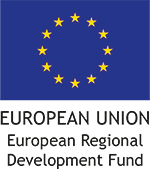A global threat to biodiversity
Anthropogenic litter provides a habitat for a variety of marine organisms, and at least 387 taxa are reported being found rafting on floating or beached litter. Most of the organisms were encountered from plastic litter, but few were also found from items made of metal, glass or paper. When floating litter is moved across the oceans by winds and currents, the organisms associated with these items can end up far from the original area.
After entering into a new area, some non-native species may dramatically alter the habitat and the whole ecosystem function by displacing native species, changing community structure and food webs and modifying important processes such as nutrient cycling. Their removal or even control in the marine environment is usually not feasible and therefore, invasive alien species are globally recognized being among the greatest threats to biodiversity.
Plastics and other anthropogenic litter are typically more persistent in the marine environment compared to natural flotsam, such as animal carcasses or seaweed, which quickly become decayed or consumed. Thus, plastic as a rafting platform may support more long-lived communities and cover greater distances than natural flotsam. As the abundance of plastic litter in the sea constantly increases, they may enhance the dispersal potential and opportunities of many species. It has been estimated that anthropogenic litter more than doubles the chances of rafting from one place to another.
A study that monitored beached litter on 30 islands across all oceans from the Arctic to Antarctic discovered that the potential for invasions increases with latitude until above 60° latitudes. Although the colonization of plastic litter seems to be highest in lower latitudes, organisms present on marine plastic have been observed as north as 79°. However, arrival to the new area does not yet imply that the species will become established – it must also be able to survive and reproduce in its new habitat. It has been suggested that when approaching the polar areas, cold water might hinder the survival of many rafters, but as climate warms up the susceptibility of polar areas to invaders may also increase.
It has also been observed that plastic size is correlated with taxon richness: large plastic items can maintain more diverse communities than smaller items, which applies both to macro- and micro-sized organisms. In addition to size, also other characteristics of litter influence the composition of rafting communities. Items with high buoyancy are more exposed to air and may tip over more easily exposing the organisms to desiccation and thus affecting their survival. However, fouling on the underside of floating item may also stabilize the item or lead to its submersion and finally sinking towards the bottom.
Examples of hitch-hiking macro- and micro-organisms
Especially of bryozoans, barnacles, polychaete worms, hydroids and molluscs are regularly encountered hitch-hiking on plastic litter. Some biological traits seem to be associated with animals typically encountered on floating litter. Majority of the rafters (72 %) are suspension feeders, which acquire their nutrition from the surrounding seawater. After litter is fouled by various micro- and macro-sized organisms, they attract also predators, scavengers, grazers and borers on their surface. Whereas sessile and mobile lifestyle and sexual and asexual reproduction seem to be equally common among rafting species, long pelagic larval stage appears to enhance colonization.
Plastic litter has been observed to enable both long distance and short distance dispersal of motile and sessile invertebrates. A good example of long distance rafting is provided by an invasive species of barnacle (Austrominius modestus) observed on plastic in Shetland Islands, UK, where it is not commonly sighted. Even transoceanic transport have been witnessed when the litter originated from the Japanese tsunami in 2011 came ashore in United States and carried a hydroid (Sertularella mutsuensis) non-indigenous to the coast of United States. Also populations already established in a certain area may benefit from marine litter in their regional dispersal: the isopod Sphaeroma quoianum is observed burrowing to Styrofoam, which provides a good substrate for rafting.
Floating litter may enhance also dispersal of species that are not directly in contact to plastics. For example many fishes have been observed to aggregate around floating litter, since they may provide shelter from predators or the fish may feed on the invertebrates settled on them. Rafting under natural or anthropogenic flotsam increases dispersal potential of fish: for example some tropical reef fish are able to cross the deep-water barrier of the Atlantic Ocean within a suitable microhabitat generated by flotsam.
In addition to hitch-hiking and aggregating macrofauna, marine litter is also colonized by diverse microbial fauna. In a study made in the North Pacific Gyre, all of the examined small plastic particles had micro-organisms on their surface. It was also discovered that the density of bacterial populations depends partly on the plastic type: polystyrene (PS) harbored more bacteria than polyethylene (PE) or polypropylene (PP). It is suggested, that the roughness or other characteristics of the surface may affect the colonization of bacteria.
The colonies of micro-organisms on plastic surface contain autotrophs, heterotrophs, predators, symbionts and even some pathogens. These pathogens observed from plastic litter include for example potential animal and human pathogens of the genus Vibrio, the ciliate Halofolliculina sp. which is known to cause skeletal eroding band disease in corals and various dinoflagellates able to form algal blooms, such as Ostreopsis sp. and Coolia sp. It is therefore suggested, that plastic litter might act as a dispersal vector also for harmful micro-organisms.

